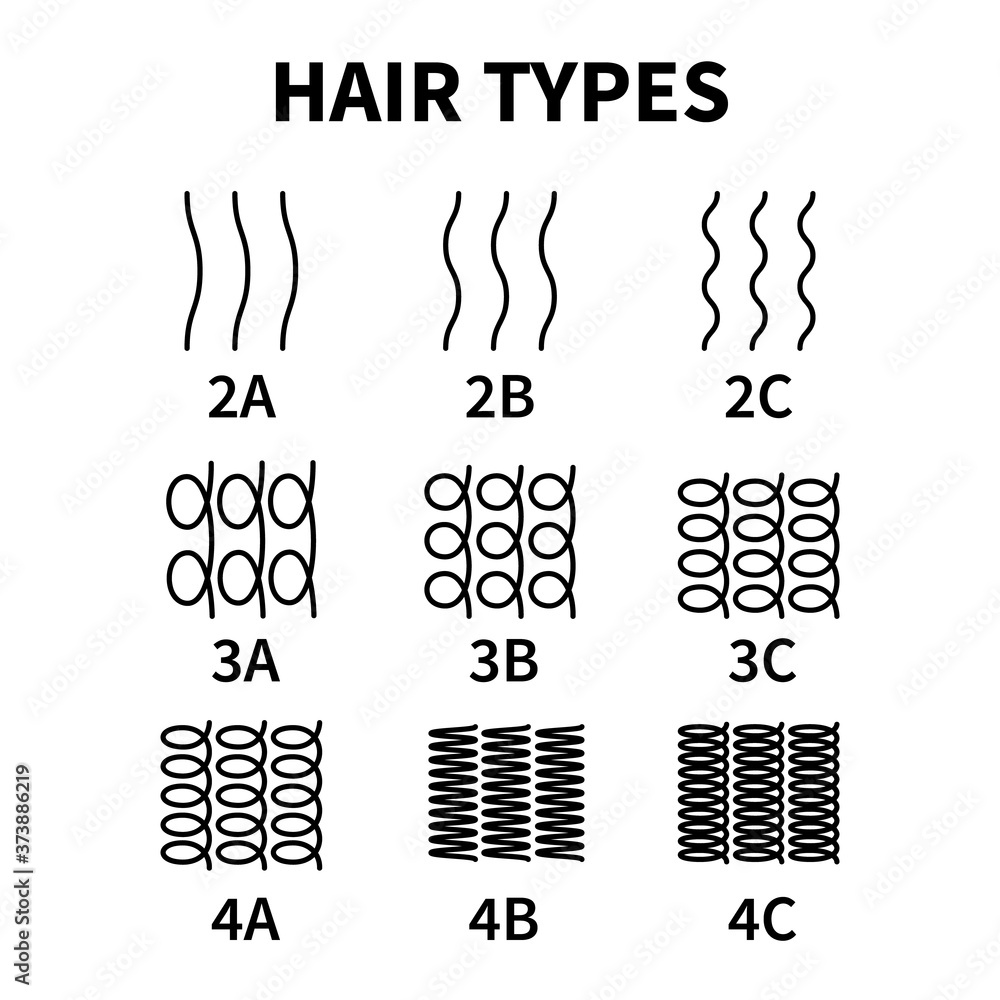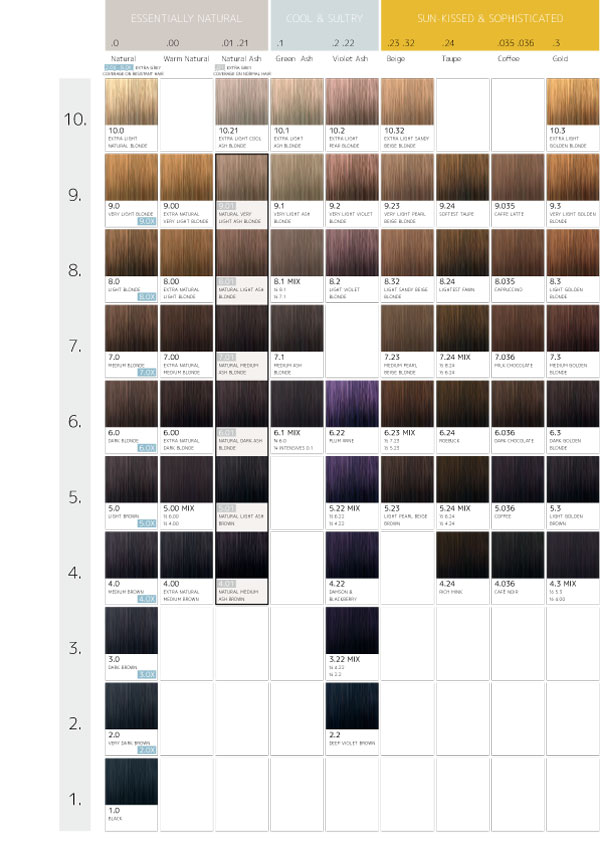
With the use of this technology, your colorist can also neutralize the color, allowing them to add more, for instance, to keep blonde hair from turning too warm. The base color is signified by the first number on the color wheel. The base level of the shade you want to achieve reflects this number. Once you settle on a shade, you and your stylist can get to work on achieving your perfect hair color. Brown-black hair color fits any dark complexion but if you want something more vibrant, try on maroon-tint colors of black hair. Mahogany brown, cinnamon brown, or light golden brown hair will flatter those with light olive skin.
Hair Color Shades Numbers
The colors that work best for canceling out orange are cool toned and ashy colors. While bleaching your hair isn’t recommended if you don’t know what you are doing, the color wheel can actually guide you to the perfect hue and balance of tonality. Hair color tones are all about how warm or cool a shade is, with natural tones being a middle ground that is neither too warm or cool. It stands for natural and is a must if you are looking to cover gray or take your hair from light to dark. The second and third numbers on the color chart that appear following the period will then be up for assessment by your colorist.
Volume 10 Developer
Hairstylists Weigh In On TikTok's Dark Blonde Vs. Light Brown Hair Debate - Bustle
Hairstylists Weigh In On TikTok's Dark Blonde Vs. Light Brown Hair Debate.
Posted: Wed, 05 Apr 2023 07:00:00 GMT [source]
There are volumes lower than 10 and will be called processing liquids. Anything lower than 10 V is only going to give you a hue or add red or deepen colors . Like 10 V processing liquids are very gentle and if you like a particular color line and it has lower volume than 10 just know it is a weaker version of 10 volume. The peroxide opens the cuticle so it can penetrate color molecules into the hair shaft. Developers are hydrogen peroxide liquid that works as an oxidizing agent for the hair color.
Underlying pigment
Better Natured Permanent Liqui-Crème Color with 20-Volume Developer lifts 1-2 levels, depending on the shade you choose. Hair color is all about levels and tones—so if you want to find your made-for-me shade (and honestly, who doesn’t?), you’ve gotta find the right combo of both. To put it another way, hair tone is the color you see in the mirror, while hair level is the number of steps you have to take to get there. To play it safe, start with a few levels lighter than your existing shade and see how that looks before gradually increasing the color. Bleached hair always draws warmth so you’ll need toners like purple shampoos to get rid of any brassy tones.
The hair formula also resists brassiness and includes some blue to counteract the orange undertones that often come with lightening hair. Goldwell Topchic is an unusual hair color company that actually doesn’t make many dyes beyond their tube formula. This formula needs to be mixed with a developer but produces a strong, defined color in a variety of shades, including browns and blondes. This line of dyes is available in a host of creative and unique colors, including bright fox red, shimmery silver, gold, blue-black, metallic brown, and even rose gold. All of these colors create for a truly unique hairstyle, though it can also be a little confusing when trying to figure out how the dye codes work. In this case, remember that higher numbers tend to be darker with L’Oreal.
How do I lift my hair color level?
When you go to the salon, you’ll want to have an achievable color in mind. Something close to your natural hair color should be easy to achieve, but a good colorist will work with you to help you get the look you want. Before going to your hair appointment, it’s good to have a sense of your color level. Strawberry blonde, golden blonde, caramel blonde, or honey blonde hair color works fine for girls with olive skin.
These colors will help to neutralize the orange tones and give your hair a more balanced look. Hair toning shampoos are color-correcting products that neutralise unwanted tones in your hair to keep your color on-point. If you’re a hair dresser or colorist, there’s a lot more to hair color theory than looking at opposite colors on the chart.
Maroon or burgundy hair color can enhance a golden tint in your skin. Jet black hair color is capable of creating a stunning contrast on those having fair skin. If you are not ready to go that dramatic, ash black hair color is also a good pick for cooler tones.
Level 9: Light Blonde
You can compare the picture with our chart of hair levels or against hair swatches if you have them. Tones range from warm to cool and are represented by the letters you see on the packaging. They are what give a hair color its overall shade characteristic. They are designated by the letters that appear next to the number/level. The dominant tone will be the first letter, the secondary tone is the second letter, and some have a tertiary (just a hint of a tone), which is the third letter. Knowing the level of your natural hair color, or what we colorists refer to as your starting level, is important because it contributes to your final result.
Undertone neutralization is particularly useful when dealing with unwanted brassiness or redness in the hair. Lastly, undertone balancing ensures that the chosen hair color looks natural and seamless. For instance, adding blue can counteract brassy tones, while yellow can brighten and warm up a color. By mastering these principles, you’ll be well-equipped to create complementary color combinations that enhance your clients’ hair beautifully.

Some will have numbers from 1-7, others from 1-10, and still more from 1-12. In general, the lower a number is, the lighter of a shade it will be, with the lowest number being almost pure white blonde and the highest being dark black. However, some manufacturers will reverse this situation, with the lower numbers being black and the higher numbers being blonde. Understanding hair levels, undertones, and complementary colors, the hair color wheel should help you determine the perfect hair color for your complexion.

But for at-home toning solutions, toning shampoos are an excellent fix. Where it really comes into its own is when it comes to color correction and toning your hair. Colour theory is the study of how colors interact with one another. This simple tool will make choosing the right shade of dye super easy. Be the first to know about brand new products, trending looks, expert advice, exclusive offers and more.
Use a demi-permanent dye, which is gentler on porous hair, to avoid blotchy results. Remember, don’t rush the fill process; take your time to achieve a lasting, vibrant color. Avoid skipping the addition of warm tones to your formula, even if you desire a cool or ash finish, as these are necessary for a balanced end result. When you’re ready to mix hair colors, it’s crucial to understand the chemistry behind the process to achieve the perfect custom shade. For those with natural hair, remember that your inherent color can affect how the new shade appears, potentially altering the intended result. If your hair is processed, especially if it’s blonde, toning may be necessary to neutralize unwanted yellow or orange tones, ensuring a clean canvas for the new color.
Since hair experts don’t recommend going more than two levels lighter or darker in a single session, you should opt for something within four levels of your current base. If you are going lighter than your natural level, warm tones will occur on their own. You can choose to enhance/bring out more “warmth” by selecting a warm shade OR counteract/tone down expected warm/brassy tones by selecting a “cool” shade in your desired level.
For example, if your hair is a medium brown color, you may be a level 5, because it’s right in the middle between black and blonde. The guideline for picking a brown hair color is the opposite of selecting a black shade. In general, warmer tones flatter cooler skin tones, and vice versa. If you have neutral tones, you have the freedom to choose any hair color you prefer, but choosing overly warm and overly cool tones is not a good idea. Is it a drastic change for a new season, a slight touch-up, or is it time to cover those pesky grays? We have plenty of resources to help you understand hair color levels and how to select the right one for you.


No comments:
Post a Comment